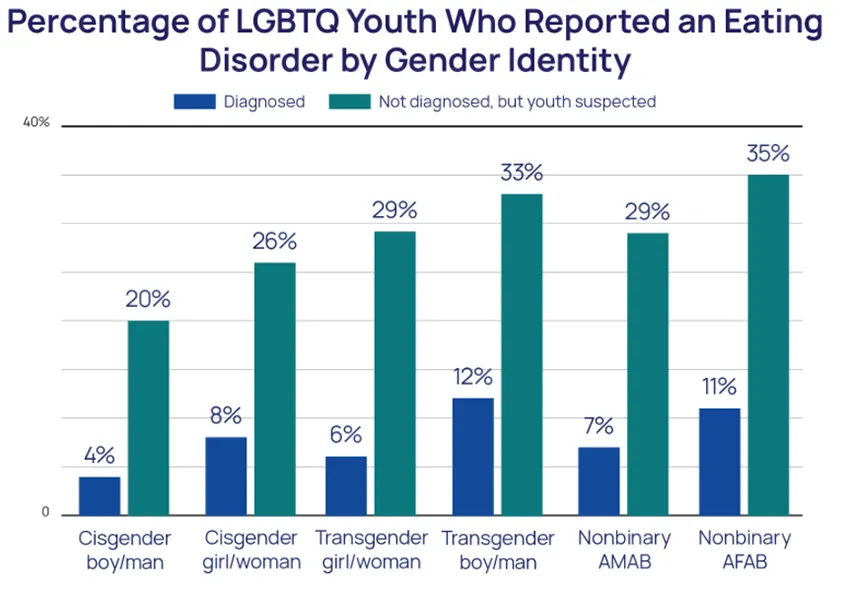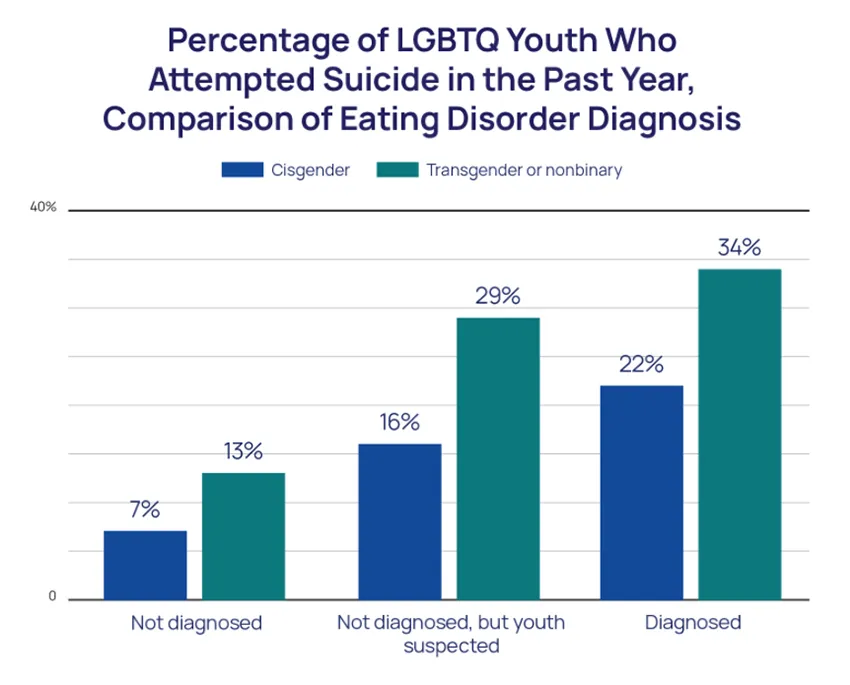Two studies released in February by Vanderbilt University and the Trevor Project highlight hardships experienced by LGBTQ youth – some of which extend into adulthood.
A Vanderbilt University Medical Center study published in the Journal of American Medical Association Psychiatry on Feb. 23 showed that 83% of LGBQ (Lesbian, Gay, Bisexual, and Queer) people reported going through adverse childhood experiences and worse mental health as adults, compared to 64% of their heterosexual peers.
"LGBTQ+ young people are facing so much hostility, from difficulty finding safe spaces at school to abusive environments at home," said Nathaniel Tran, lead author and a doctoral student in the Department of Health Policy. "Our research highlights the need for teachers, community leaders, and family members to help promote better LGBTQ+ health."
For the study, over 60,000 people were surveyed across eight states. Of the respondents, nearly 3,000 identified themselves as Lesbian, Gay, Bisexual, or Queer. They experienced higher rates of the eight defined adverse childhood experiences, although researchers found disparities were the greatest for sexual and emotional abuse, and household mental illness.
The adverse childhood experiences in question were as follows: physical, emotional, and sexual abuse; household mental illness; household substance misuse; household domestic violence; having an incarcerated household member; and parental divorce or separation.
Out of LGBQ survey respondents, 52% reported three or more adverse childhood experiences, compared to 26% of heterosexual adults. Researchers looked at the number of bad mental health days respondents experienced in the past month as adults, and found that LGBQ people experienced a greater number of bad mental health days per month, regardless of their adverse childhood experiences. LGBQ people who experienced one or more adverse childhood experience reported ten bad mental health days per month, compared to five among their heterosexual peers.
"Several studies have shown us that children who experience maltreatment and other adversity often grow up to be adults with a variety of challenges, including worse physical and mental health and worse economic well-being," said Laura Henkhaus, PhD, a postdoctoral fellow in the Department of Health Policy. "Our new research demonstrating greater burdens on LGBQ adults who've experienced childhood adversity suggests an immediate need for policymakers, schools, and communities to respond with protective measures and support for queer youth."
Rates of eating disorders and suicide attempts
The Trevor Project released its 2021 National Survey on LGBTQ Youth Mental Health study on Feb. 17. It showed how young people in the LGBTQ community experience higher rates of eating disorders and suicide attempts compared to their heterosexual peers.

Out of LGBTQ youth aged 13-24, 9% have been diagnosed with an eating disorder, while an additional 29% stated they were never diagnosed with an eating disorder but suspected they had one.
Those with a history of an eating disorder were found to have about five to six times greater odds of attempting suicide, compared to those who never had an eating disorder.

Suicide risk is greater among those suspecting having an eating disorder: the odds of a suicide attempt in the past year were over twice of those who had never suspected having an eating disorder.
According to the Trevor Project, past studies found these higher rates among LGBTQ people to be related to experiences of bullying, discrimination, and internalized stigma based on their LGBTQ identity and its concealment.
Past studies also show that specific subgroups of the LGBTQ community, such as Transgender and Nonbinary people, may be at greater risk for eating disorders, due to body dissatisfaction as a leading common stressor.
Also in the Trevor Project study, cisgender LGBTQ boys and men reported the lowest rates of being diagnosed with or suspecting having an eating disorder. Transgender boys and men and Nonbinary youth assigned female at birth had the highest rates.
Cisgender girls and women, Transgender girls and women, and Nonbinary youth assigned male at birth had similar rates of being diagnosed with and suspecting having an eating disorder.
Native and Indigenous LGBTQ people (12%) and multiracial people (10%) reported the highest rates of being diagnosed with an eating disorder, with an additional 33% of both groups suspecting they have an eating disorder.
LGBTQ youth who are Asian Pacific Islander (5%) or Black (4%) reported the lowest rates of being diagnosed with an eating disorder, although Black LGBTQ youth reported similar rates of suspecting having an eating disorder (28%) as white LGBTQ youth (27%), even though white LGBTQ youth are diagnosed with an eating disorder at more than twice the rate of Black LGBTQ youth (9% vs. 4%).
To combat the rates of eating disorders and suicide attempts among LGBTQ youth, the Trevor Project recommends creating safe and supportive school environments, enacting antidiscrimination policies, and increasing access to gender-affirming care for Transgender and Nonbinary youth in order to reduce what's called minority stress.


